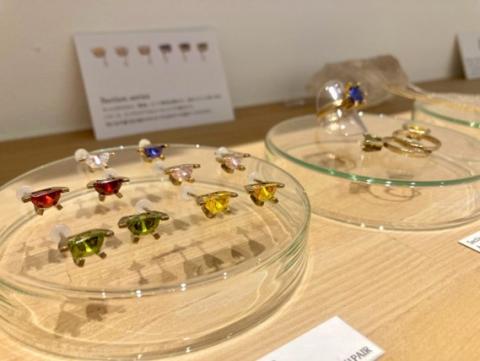Main content starts here.
My Comfort Blanket
If you are tired and feel that urban areas like Tokyo and Osaka are too busy with people and modern life for you, why not visit Yamanashi, where things are more relaxed and have a carefree feeling? There are less people, and cleaner air. For me, Yamanashi feels somewhat like rural Pennsylvania, near my grandmother’s house. In her neighborhood there is a pharmacy, restaurant and grocery store all close by in a small residential area. That’s the kind of setting you will find in Yamanashi. It’s a place to regain and maintain one’s mental stability. And, amongst its neighborhood shops, you will find bakeries and sweets cafés serving up culinary delights from a Japan long gone by. Speaking of which, I would like to introduce you to one of Yamanashi’s very special places that works as a comfort blanket for me.
I have been living in Yamanashi for about two years studying at a college, and in my free time I have explored many places. For example, I have been to Shosenkyo Valley (昇仙峡), a sightseeing area where you can hike and enjoy mountain scenery from the ropeway. I have also traveled to the Jukai Forest (樹海), an ancient place full of lush nature which overgrown the once barren volcanic caldera of Mr. Fuji. And then there is Fuji-Q Highland, a theme park somewhat like Six Flags Amusement Park in the United States of America. Indeed, each place has its own interesting treasures and special uniqueness you will want to visit and experience. However, than recommending Yamanashi’s picturesque scenery, I recommend its sweets.
I am in love with a shop near my school called Shorinken (松林軒) . It has a welcoming and relaxing atmosphere where one can satisfy their hunger for wagashi, which is Japanese traditional confections.
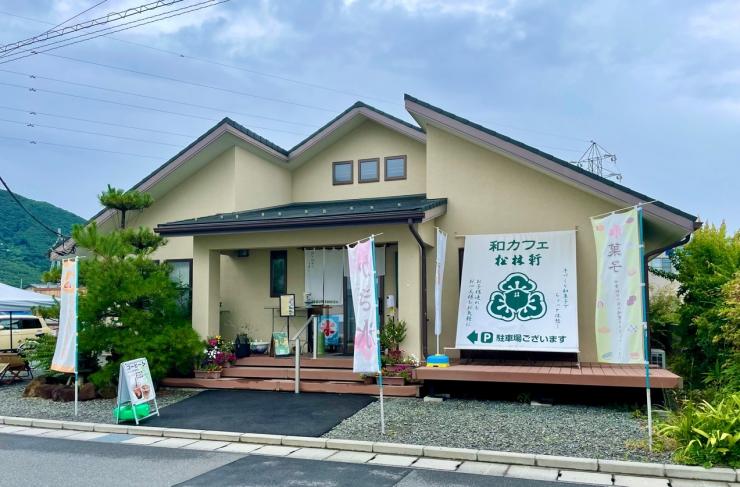
Wagashi has a history of about 2,000 years. It has changed over time, taking influences from abroad, such as Kakko (餲餬) from China, a cake-like sweet made of flower and fried in oil, and Kasutera (カステラ) , known as a Portuguese sponge cake. While incorporating such influences, wagashi has retained its Japanese essence, long loved by the natives of this island nation.
Shorinken has prospered since 1832, standing by the local Yamanashi people for almost 200 years. One of the essential aspects that makes Shorinken a popular confection shop, beloved by the local people, is that they use local products in their confections, such as grapes, peaches, and walnuts. In addition, their menu and style changes with the four beautiful seasons of Japan, and this may be what makes their confections so special and so unforgettable.
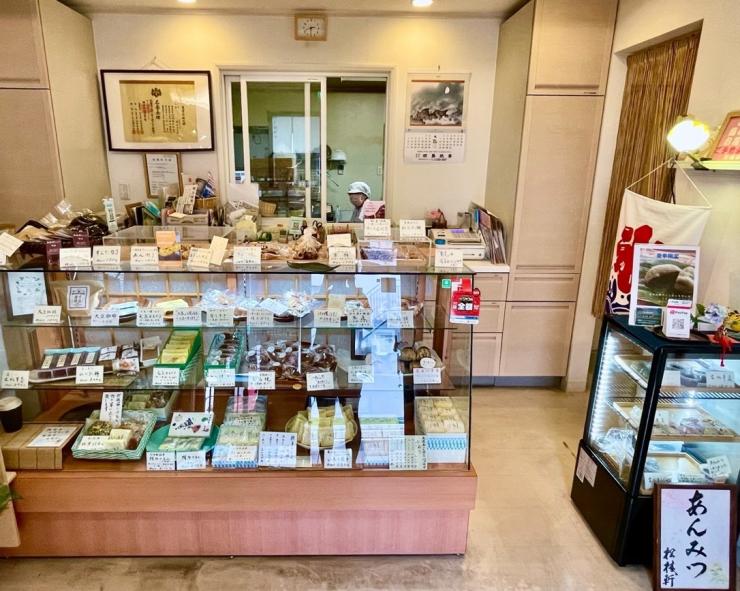
Showcase with their monthly changing confections
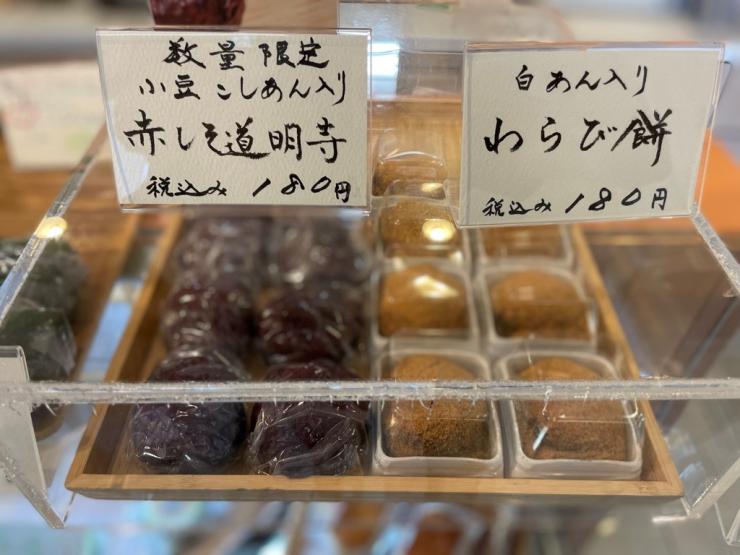
Confection; Perilla Sweat Bean Mochi & Warabimaju
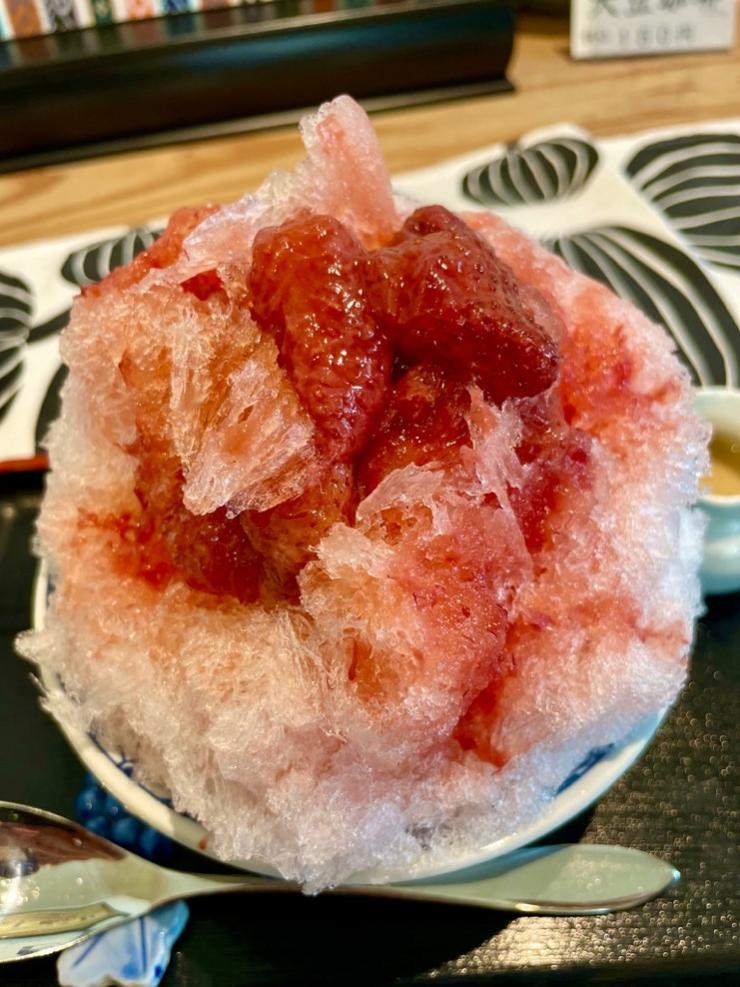
Shaved Ice with Strawberry Syrup
As soon as you enter the shop, you immediately get a warm greeting. The staff’s eyes sparkle with a happiness sure to bring a smile to your face, even though you might be having an awful day. Once inside, you will find that the shop is rather small and cozy, with a comfortable atmosphere bathed in a kind of lullaby music that releases the tension of everyday life. Then, your eyes will fall upon confections that are lined in the showcase like a jewelry box. My favorite part of the counter is that it has a point of purchase advertisement written by the daughter of the shop owner. Besides the counter, there are three tables where you can eat the confections you bought or enjoy ordering from their café menu. On their café menu, they have various flavors of shaved ice, beverages like matcha (抹茶), and Anmitsu (餡蜜) which is a Japanese traditional dessert that contains small diced jelly, fruit, and sweet red beans. The first time I visited Shorinken was with my very first friend that I made at my college. Clueless about Yamanashi and life at college, I forced myself to ask a girl I saw in our college entrance ceremony to go try some confections with me. It was a happy coincidence that she too loved confections…what a life saver! Anyhow, talking over sweets at the shop was what made us get closer and now she is now my roommate.
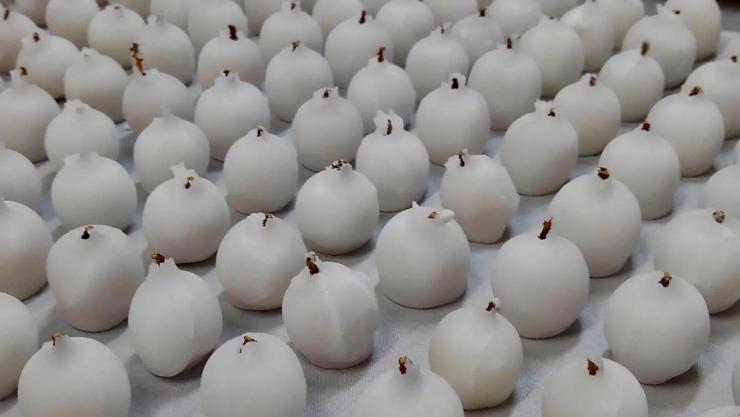
It is guaranteed that you will enjoy everything on the menu; however, there is one confection, called Tsukinoshizuku ( 月の雫, Drop of the Moon), that the store recommends. You must try it at least once, as there is a strong possibility that it will become your favorite confection. Tsukinoshizuku is famous in Yamanashi and is very simple to prepare. The method uses only sugar and grapes, but the Tsukinoshizuku made in Shorinken is extremely delicious and cannot be compared with any other Japanese confectioneries in Yamanashi. This is because it uses grapes made in Yamanashi and is made by the hands of Shingo Suzuki who has long been in the confection industry. Having a white spherical appearance, when you bite into it, you will find the sugar crumble and magically disappear in your mouth, followed by a rush of grape juice, carrying various flavors all the way down into your stomach and deep into your soul. In short, you will fall in love with it. I precisely remember when I first tried it. Its juiciness and sugar crust blew my mind. The sugar brings out the flavor of the grape in a most unforgettable way. I was confused how to explain the magic that happened in my mouth and bought another one to figure it out. One Tsukinoshizuku costs only ¥100 but is priceless in value. They are sold in only the winter season, so I highly recommend that you try it when you have the chance.
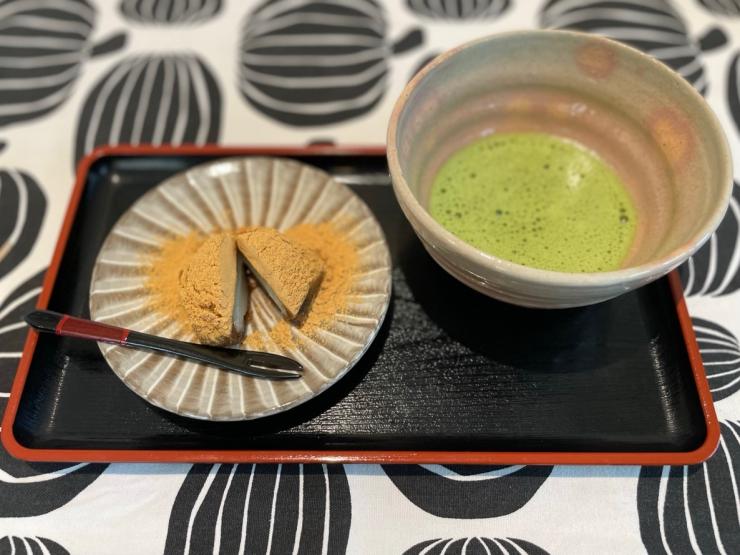
One other confection that I want to introduce is warabimanju (蕨饅頭). It has long been eaten by Japanese in the summer as a snack. Warabimanju has a dumpling kind of shape and is coated in gound soybean powder. It has a jelly like texture made from starch. In Shorinken, they sell warabimanju in the summer months. When I saw that Shorinken sold warabimanju, I had no doubts about buying it. One bite into it brings a harmony of flavor and texture, with its bracken-starch black sugar flavor and its sweet white bean paste dancing together in superb balance across my tongue and into my heart. On the other hand, the texture is like jelly, and the sweet white bean paste is made palatable and lighter than usual to match the overall texture. Warabimanju costs ¥180 but again, it’s so good a price cannot accurately be put upon its true value. You must keep in mind though, Warabimanju are only sold in the summer seasons, so be sure not to miss them.
Whether you come to Yamanashi for its history, its panoramic landscapes, or its towering mountains, please make a point to enjoy an encounter with unexpected new flavors that may change your life. Shorinken is a 5-minute walk from Yamanashi Gakuin University. I go to Shorinken once every 2-weeks to relax, regain myself and reward myself for my study efforts.
Perhaps… it’s the time for me to go to Shorinken as I’m in the middle of my finals and need some rest.
I’ll see you there!
Shorinken's Website (Japanese):
TOP|天保3年創業松林軒豊嶋家 (shourinken.co.jp)
References:
Tokyo Wagashi Association. (2019). About Wagashi. Wagashi |Tokyo Wagashi Association. Retrieved July 27, 2022, from https://www.wagashi.or.jp/japanesesweets-wagashi/en/about/
松林軒豊嶋家. (2022). TOP|天保3年創業松林軒豊嶋家. Retrieved July 27, 2022, from https://shourinken.co.jp/
松林軒豊嶋家. (n.d.). 松林軒豊嶋家の真実. Kudamacho, Yamanashi; 松林軒豊嶋家.
Amane
Published on
- January 31, 2023
Share
-

The Golden Peak (金峰山―Kinpusan) of Yamanashi
May 23, 2025
-

May 23, 2025
Home of Mt. Fuji > Kaleidoscope Students Journal > My Comfort Blanket
